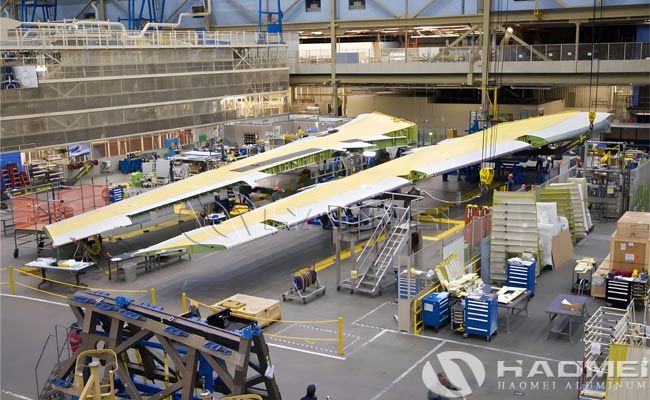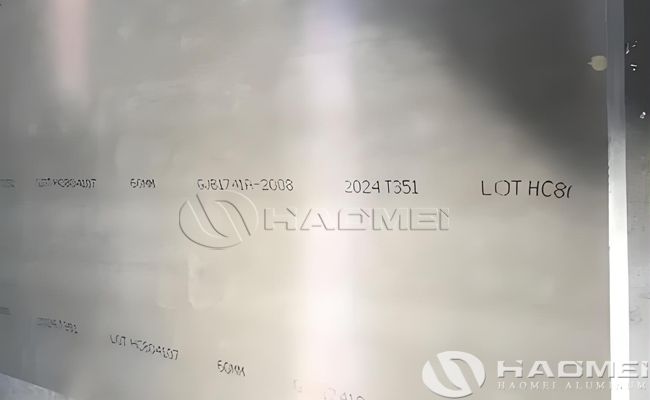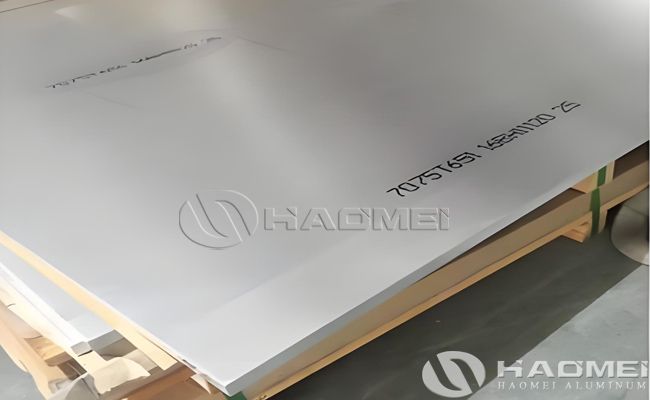
![]() Home > News
Home > News
Source:https://www.aircraft-aluminium.com/a/aircraft-aluminum-sheet-for-sale.html
In the field of aerospace, the lightweight and high strength of materials have always been the core of technological breakthroughs. As a key material for aircraft structure, the performance of aircraft aluminum sheet for sale directly affects the safety and economy of aircraft.

1. 2024 aluminum sheet: a classic choice for aviation structure
2024 aluminum alloy belongs to the Al-Cu-Mg series of hard aluminum alloys. Its chemical composition is based on copper (3.8-4.9%), and magnesium (1.2-1.8%) and manganese (0.3-0.9%) form a strengthening phase. This composition design gives it excellent tensile strength (470-520MPa) and fatigue resistance, especially below 150℃, it can still maintain stable mechanical performance. Its typical applications include aircraft skins, wing beams, bulkheads and other load-bearing structural parts, as well as rivets and missile components. For example, the fuselage skin of a certain model of passenger aircraft uses 2024-T3 aluminum plate, which improves the surface strength through cold hardening and effectively resists the aerodynamic load during flight.
It is worth noting that 2024 aluminum alloy performs particularly well in high temperature environments. When the temperature exceeds 125°C, its strength is even better than that of 7075 aluminum alloy, making it an ideal material for engine peripheral components. However, the alloy has weak corrosion resistance and usually needs to be protected by aluminum cladding or anodizing.
2. 7075 aluminum plate: a breakthrough in the limit of superhard materials
7075 aluminum alloy belongs to the Al-Zn-Mg-Cu series of superhard aluminum. The synergistic effect of zinc (5.1-6.1%) and magnesium (2.1-2.9%) makes its heat treatment strengthening effect significant, and its tensile strength can reach 572MPa, far exceeding ordinary steel. Its typical applications include high-stress components such as aircraft landing gear, wing spars, hydraulic valve bodies, as well as high-end molds and sports equipment. For example, the landing gear structure of a new fighter uses 7075-T651 aluminum plate, and the hot isostatic pressing (HIP) process is used to eliminate internal defects to ensure reliability under extreme impact loads.
Another major advantage of the alloy is its corrosion resistance. By optimizing the chromium (0.18-0.28%) content and combining it with anodizing treatment, 7075 aluminum alloy can be used stably for a long time in a humid or salt spray environment, which makes it widely used in carrier-based aircraft and marine aircraft. In addition, its fine grain structure gives it excellent cutting performance and is suitable for precision machining of complex shapes.
3. 2014 aluminum sheet: a high-strength pioneer in the field of forgings
2014 aluminum alloy belongs to the Al-Cu-Mg series forged aluminum alloy with a high copper content (3.9-5.0%) and a tensile strength of 448MPa (T6 state), especially in the field of forgings. Its typical applications include high-stress forgings such as aircraft landing gear hubs and propeller components. For example, the 2014 aluminum alloy precision hub die forgings developed by China Aluminum Southwest Aluminum meet the needs of complex service environments with large instantaneous temperature differences and high impact through topological optimization and thermomechanical processing (TMP) processes. Although the plasticity of this alloy in the hot state is not as good as some alloys, its cutting performance is excellent and it is suitable for manufacturing high-precision structural parts.
4. 2124 aluminum sheet: innovative upgrade of damage resistance
2124 aluminum is a high-purity improved version of 2024 aluminum. By strictly controlling the impurity content, its short transverse elongation and fracture toughness are significantly improved. The tensile strength reaches 470MPa (T851 state), and the fatigue resistance is more than 30% higher than that of 2024 aluminum. It is widely used in aircraft skins, wing beams and other parts with high damage resistance requirements. For example, the fuselage bulkhead of a new regional airliner uses 2124-T851 aluminum plate, and internal defects are detected by ultrasonic flaw detection technology to ensure reliability under cyclic loads. The alloy also has good weldability and is suitable for complex welded structures.
5. 7050 aluminum plate: the core material of domestic large aircraft
7050 aluminum alloy is the third generation of advanced high-strength aluminum alloy, with a tensile strength of more than 500MPa and a stress corrosion resistance 40% higher than 7075 aluminum. Its typical applications include key load-bearing parts such as wing beams and fuselage frames of C919 large aircraft. Southwest Aluminum has achieved industrial production of 6.0-203 mm full-thickness specification products through independent research and development, breaking the foreign technology monopoly. The alloy still maintains high strength in a liquid nitrogen environment of -196℃, and is suitable for cryogenic pressure vessels and aerospace equipment.
6. 7055 aluminum alloy: the peak performance of superhard materials
7055 aluminum is a new generation of high-strength alloys in the 7xxx series, with a tensile strength of 614MPa (T7751 state) and a fracture toughness 30% higher than 7075 aluminum. Its typical applications include key load-bearing parts such as the upper wing skin and chord of the Boeing 777. For example, the wing stringers of a large transport aircraft use 7055-T7751 thick plates, and the hot isostatic pressing (HIP) process is used to eliminate internal stress to ensure reliability under high cyclic loads.
7. 2219 aluminum sheet: high temperature expert in welded structures
2219 aluminum belongs to the Al-Cu alloy system with a copper content of 5.8-6.8%. It still maintains high strength at high temperatures of 250-300℃ and has excellent weldability. Its typical applications include welded structures such as aerospace fuel tanks and rocket forging rings. For example, the propellant tank of a launch vehicle uses 2219-T87 aluminum plate, and the friction stir welding (FSW) process is used to achieve defect-free welds, while meeting the requirements of anti-brittle fracture in low-temperature environments. The alloy exhibits excellent corrosion resistance in liquid oxygen medium and is suitable for liquid oxygen tanks of reusable rockets.
In actual selection, the following factors need to be considered comprehensively:
- Load requirements: 7055/7050 is suitable for ultra-high strength components, 2014/2124 is suitable for damage-resistant structures, and 2219 is suitable for high-temperature welding scenarios.
- Environmental adaptability: 7050 is preferred for low-temperature environments, 2024/2219 is selected for high-temperature environments, and 2124 can be used for conventional environments.
- Processing cost: 2024/2014 technology is relatively mature and suitable for large-scale production; 7055/7050 requires complex heat treatment and is more expensive.
2024 and 7075 aluminum alloys have always dominated the aviation aluminum plate market with their unique performance advantages. Alloys such as 2014, 2124, 7050, 7055, and 2219 have demonstrated irreplaceable value in the sub-segments of high strength, damage resistance, and weldability. With the continuous advancement of materials science and manufacturing technology, these classic alloys will continue to play a key role in the aerospace field.